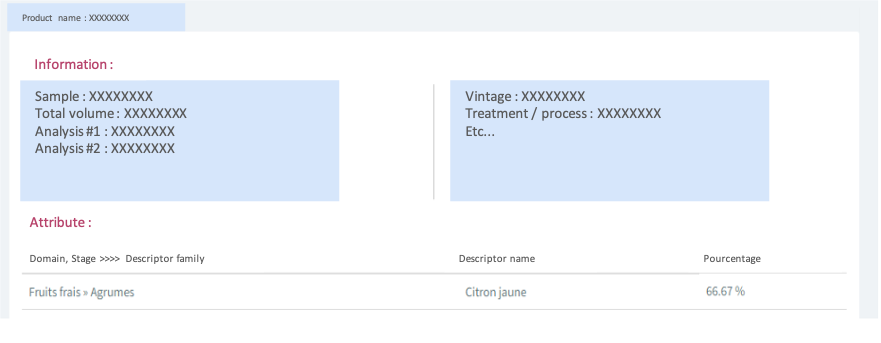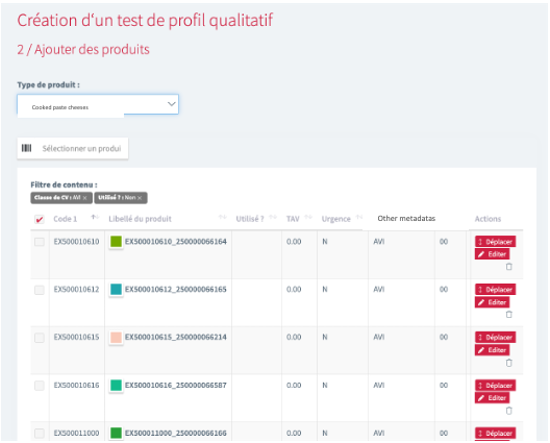THE QUALI® PROFILE : a simple evaluation for your quality control !
The origin of this descriptive method
Harry T. Lawless (1998) - Cornell University, USA
Descriptive analysis of complex odors : reality, model or illusion ?
In 1998, Harry T. Lawless published an article that explored the limits of traditional descriptive methods used to analyze olfactory perceptions and offers alternatives to improve the accuracy and applicability of sensory descriptions.
1. The limits of the classic descriptive methods that he mentions :
- Variability of human perception : perception of odors is subjective and varies from person to person, making quantification difficult.
- Complexity of aromas : aroma perception involves complex interactions between different compounds, which complicates precise description.
- Overall image of odors : classical methods tend to fragment perceptions, not reflecting the integrated olfactory experience.
- Importance of intensity : excessive focus on intensity may miss other critical aspects of olfactory perception.
2. An alternative method of "applicability" or good correspondence of a descriptor to an odor :
- Qualitative progress : this method emphasizes the quality of perceptions rather than quantitative measurements, better capturing the richness of olfactory experiences.
- Consensus by families of descriptors : by using families of descriptors, the method promotes consensus between panelists/tasters.


The Quali® Profile: a qualitative approach now available in Tastelweb®!
HISTORICAL
Since the middle of 2000s, this unique approach was used, in a daily way, by some of our customers thanks to our Tastel® Windows historical software.
GOALS
- Method very suitable for the evaluation of olfactory perceptions, to describe or control qualitatively. It is also applicable on perceptions in the mouth, despite greater simplicity on the latter (textures, tannins...).
- Identify and characterize differences between products
USES / ADVANTAGES - DISADVANTAGES
- A very useful approach in industrial processes for purchasing raw materials or controlling products to categorize samples.
- A common test that may require only a few well-trained tasters (3, 4 to 5 judges, or more).
- Selection of important descriptors for a complete description.
- Results may vary depending on the tasters present.
MECHANICS
- Questionnaires with checkmarks, in the form of a table or wheel.
- Counting of individual results.
- The method also includes a collective discussion process to reach an agreement on product classification.


The Quali® Profile : general treatments and results !
It is possible to access a general part of treatments and results, characterized by :
- A count of the checkmarks per descriptor for the panel, then classification by decreasing occurrences in order to characterize the products. This allows to identify the most relevant descriptors to characterize each product.
- Graphical representations of frequencies
in order to identify the main differences between products (PCA, frequency tables, etc.)


The Quali® Profile : customizable treatments and results !
It is essential to be able to decide by consensus on the products using well-defined and accessible criteria.
To do this, it is possible to rely on two main axes : general sensory results for each product and customizable metadata.
- The most relevant descriptors
- Integration of customizable metadata. This metadata may include analytical information (such as nutritional values or chemical compositions), volume of the product, the name of the supplier, etc..

At the end of this collective discussion, it is possible to establish a summary :
- Categorize and give conformity to products : for each product, it is essential to provide a synthetic commentary on sensory evaluation. This review should summarize the strengths and weaknesses of the product, based on sensory results and customizable metadata.
- In addition to this comment, other customizable fields can be included (to be defined during the initial audit, with each client) : these fields can, for example, include
product orientation information
(category, segment / quality, brand, etc.),
the production actions to be planned
(corrections, need for additional chemical analysis, etc.) and
the purchase price of this or that ingredient, etc...



The Quali® Profile : automatable data flows !

To optimize the information management process and improve product traceability, the implementation of automated data flows between the corporate information system and Tastelweb® is essential. This integration is based on three essential points :
- automated data flows : the integration of Tastelweb® with various business information systems such as ERP, SAP, Oracle, IDSystemes, Soft Rioja, Siemens Lims...enables smooth and efficient data synchronization. With this automation, information can flow freely and in real time between different platforms, eliminating the need for manual entry and reducing the risk of error. This two-way connection ensures that all stakeholders have the most recent and accurate information, facilitating decision-making and optimization of internal processes.
- input flows : the data necessary to initiate and configure the tests, such as the test name, the evaluation dates, the product listing to test, and the associated metadata (analytical data, profiles, etc.)
- output flows : the resulting test data, which may include sensory results and custom fields, established during the synthesis.
- a customization of the exchange mode : data exchange can be done via various formats and technologies to ensure optimal compatibility with the systems in place :
- Flat files (CSV or TXT files)
- .json files (more structured and flexible format)
- API (direct and real-time integration)







